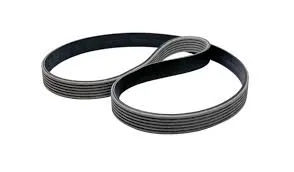- Arabic
- French
- Russian
- Spanish
- Portuguese
- Turkish
- Armenian
- English
- Albanian
- Amharic
- Azerbaijani
- Basque
- Belarusian
- Bengali
- Bosnian
- Bulgarian
- Catalan
- Cebuano
- Corsican
- Croatian
- Czech
- Danish
- Dutch
- Afrikaans
- Esperanto
- Estonian
- Finnish
- Frisian
- Galician
- Georgian
- German
- Greek
- Gujarati
- Haitian Creole
- hausa
- hawaiian
- Hebrew
- Hindi
- Miao
- Hungarian
- Icelandic
- igbo
- Indonesian
- irish
- Italian
- Japanese
- Javanese
- Kannada
- kazakh
- Khmer
- Rwandese
- Korean
- Kurdish
- Kyrgyz
- Lao
- Latin
- Latvian
- Lithuanian
- Luxembourgish
- Macedonian
- Malgashi
- Malay
- Malayalam
- Maltese
- Maori
- Marathi
- Mongolian
- Myanmar
- Nepali
- Norwegian
- Norwegian
- Occitan
- Pashto
- Persian
- Polish
- Punjabi
- Romanian
- Samoan
- Scottish Gaelic
- Serbian
- Sesotho
- Shona
- Sindhi
- Sinhala
- Slovak
- Slovenian
- Somali
- Sundanese
- Swahili
- Swedish
- Tagalog
- Tajik
- Tamil
- Tatar
- Telugu
- Thai
- Turkmen
- Ukrainian
- Urdu
- Uighur
- Uzbek
- Vietnamese
- Welsh
- Bantu
- Yiddish
- Yoruba
- Zulu
Okt . 10, 2024 07:13 Back to list
Choosing the Right Rubber Timing Belt for Your Vehicle's Optimal Performance
Understanding Automotive Rubber Timing Belts Importance, Function, and Maintenance
The automotive industry is filled with intricate components that work together to ensure a vehicle operates smoothly. One such vital component is the timing belt, often made from durable rubber materials. The timing belt plays a crucial role in the internal combustion engine's operation, synchronizing the rotation of the crankshaft and camshaft. This synchronization is essential for precise timing during the intake and exhaust processes of the engine cycle.
Function of the Timing Belt
At its core, the timing belt serves as the link between the crankshaft, which converts linear motion into rotational motion, and the camshaft, which controls the opening and closing of engine valves. As the engine runs, the crankshaft rotates, and the timing belt translates that movement to the camshaft. This coordination ensures that the engine's valves open and close at the correct times, allowing for efficient combustion, which ultimately powers the vehicle.
Timing belts are typically made from a reinforced rubber compound, featuring teeth that grip the sprockets of the crankshaft and camshaft. This design allows for optimal force transmission without slipping. The materials used in modern timing belts are engineered to withstand high temperatures and resist wear, ensuring longevity and reliability.
auto rubber timing belt

Importance of Regular Maintenance
Maintaining the timing belt is essential for any vehicle owner. Over time, rubber materials can degrade due to exposure to heat, oil, and environmental factors. If a timing belt fails, it can cause significant engine damage, leading to costly repairs. Many manufacturers recommend replacing the timing belt every 60,000 to 100,000 miles, but it's essential to consult the vehicle’s owner manual for specific recommendations.
Signs of a failing timing belt may include unusual noises from the engine compartment, such as a ticking sound, or engine misfires. Additionally, oil leaks around the timing belt cover can signal deterioration. Regular inspections by a qualified mechanic can identify potential issues before they escalate into major problems.
Conclusion
In conclusion, the automotive rubber timing belt is an indispensable component that ensures the proper functioning of an engine. Its ability to synchronize crucial engine parts facilitates efficient combustion and overall vehicle performance. However, like any automotive part, it requires regular maintenance and timely replacement to prevent failure. Vehicle owners should stay informed about their timing belt's condition and adhere to the manufacturer's maintenance schedule. By doing so, they can ensure longevity not only for the timing belt but for the engine as a whole, thereby safeguarding their investment in their vehicle. Regular check-ups and prompt attention to any warning signs will go a long way in maintaining the health and performance of your car’s engine.
-
Korean Auto Parts Timing Belt 24312-37500 For Hyundai/Kia
NewsMar.07,2025
-
7PK2300 90916-T2024 RIBBED BELT POLY V BELT PK BELT
NewsMar.07,2025
-
Chinese Auto Belt Factory 310-2M-22 For BMW/Mercedes-Benz
NewsMar.07,2025
-
Chinese Auto Belt Factory 310-2M-22 For BMW/Mercedes-Benz
NewsMar.07,2025
-
90916-02660 PK Belt 6PK1680 For Toyota
NewsMar.07,2025
-
drive belt serpentine belt
NewsMar.07,2025

